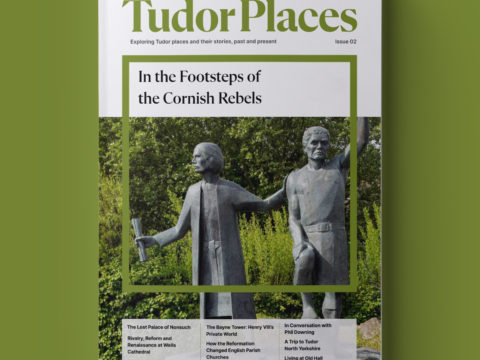Sir Robert Dudley and the Secrets of the Sea
Chapter 2 : Downward Turn of Fortune's Wheel
Dudley was increasingly associated with Leicester’s step-son and Elizabeth’s new favourite, Robert Devereux 2nd Earl of Essex. The growing personal and political rivalry between Essex and Robert Cecil, the son of Elizabeth’s faithful counsellor, William Cecil, Lord Burghley, had an unexpected consequence for Dudley when Robert Cecil struck his name from the list of officers who played a prominent part in the Battle of Cadiz and replaced it in the published account with a man connected with Dudley’s own uncle, Lord Howard of Effingham.
Nor did the aging monarch have any intention of permitting Leicester’s son to undertake another hazardous voyage. Instead, he remained at home, with his new wife, Alice Leigh, and a growing family of daughters, still driven by his interest in exploration to commission expensive navigational instruments from London’s leading makers and to back Captain Benjamin Wood’s voyage to the Philippines and China. Wood set off with Dudley’s ships the Bear and the Bear’s Whelp and a letter of introduction to the Emperor of China from Queen Elizabeth I in 1596. After February 1597 nothing certain was ever heard of them again.
Whilst Dudley divided his time between London and Kenilworth, things were becoming more unsettled at court. Rivalries which the queen had controlled throughout her reign were becoming more tense. Essex and Cecil were increasingly antagonistic. In February 1601 having lost his position at court and fearful of financial ruin the Earl of Essex and his followers rose in rebellion. It was not long before the conspirators found themselves under arrest. Ottaviano Lotti, the representative of the Grand Duke of Tuscany in London, named only three of the hundred men arrested and sent to the Tower for their part in the uprising. The Earl of Essex and his step-father, Sir Christopher Blount, would both face the headman’s axe. The third man, Dudley, was released from his prison and sent home.
Queen Elizabeth I died on 24 March 1603. Power transferred to King James VI of Scotland, the son of Mary Queen of Scots. Dudley had been protected by the queen because of her love for his father but James, now King James I of England, chose to blame Leicester for agitating for Mary’s execution. Even worse, Dudley’s legitimate cousin, Sir Robert Sidney, who regarded himself as Leicester and Warwick’s rightful beneficiary, had first visited Scotland on a diplomatic mission in 1588 and been raised to the peerage as Baron Sidney of Penshurst on James’ accession as well as being appointed as chamberlain to Queen Anne’s household. Despite his wealth, Dudley was the illegitimate son of a man now reviled by the Crown. Without the support of the monarch, his future began to look uncertain.
An encounter with Owen Jones, a former servant from Dudley’s boyhood, gave him the idea that his parents were legally married. Legitimate right would ensure that Dudley’s estates were safe from Sydney’s dynastic and territorial ambitions even if he did have the ear of the new king and his consort. Dudley, encouraged by his father-in-law, Sir Thomas Leigh, began to collect evidence and witnesses before taking the case to the ecclesiastical court at Lichfield in September 1603. This had the effect of uniting Sir Robert Sidney in common cause with Leicester’s acknowledged widow and the case in Lichfield was halted on the orders of the Privy Council. The case was removed to the court of the Star Chamber in 1604 where the Crown’s interest aligned with those of Sidney and Lettice. Although Dudley produced witnesses prepared to testify that his parents were married, amongst them his own mother, a judgement was passed against him on 10 May 1605. He was fined £100 and the evidence suppressed. Historians are divided as to whether a marriage was celebrated or not.
On 26 June 1605 Dudley left England with a licence issued by the Keeper of the Records, Sir Thomas Lake, to travel abroad for three years. He was permitted to take three servants, four horses and £80 as well as the usual provisions for such a journey. Only when Dudley was safely in Calais did anyone realise that his page was not, in fact, a boy but his own cousin, Elizabeth Southwell, who was one of Queen Anne’s ladies in waiting. There was no hint or record of an affair before their flight. In France the couple converted to Catholicism and, having petitioned the Pope for a dispensation for consanguinity, married despite the fact that Dudley left his wife and four daughters in England. It is difficult to know which of these actions James I’s courtiers found more scandalous.

